As The UWI settles into its second semester for the current academic year, the public may be anxious to hear from the St Augustine Campus administration what name it has chosen for the university’s oldest hall of residence, having already repudiated Viscount Milner after whom that hall has been identified for the past ninety years.
As the debate over the relevance of Milner to a post-colonial Caribbean raged on last semester, some opponents of re-naming tossed a doosra at the Cross Rhodes Freedom Project (which spearheaded the re-naming campaign), questioning the movement’s silence on Daaga, the “Liberated African” who led the mutiny of the First West India Regiment in 1837, and after whom Daaga Hall is named.
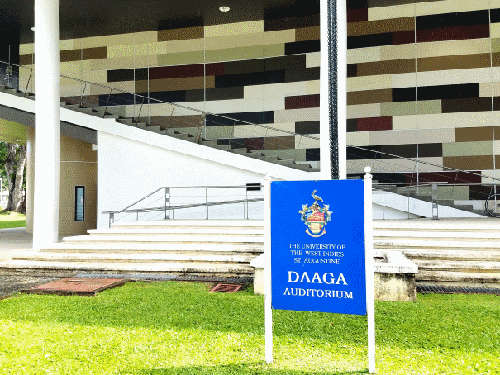
In a Letter to the Editor carried in the Newsday of 13 October, 2017, David Subran argued that, since Daaga was “a chieftain slave trader in Guinea,” he should not be honoured on the St Augustine campus, if the principle that justifies the removal of Viscount Milner’s name is objectively applied.
Interestingly, the original building on the site of Daaga Hall was the Imperial College of Tropical Agriculture’s (ICTA) dining hall-cum clubhouse for residents of Milner Hall. Both were commissioned in 1927 to service the ICTA.
In 1962, the building became the students’ Guild Hall, which transformed into the revolutionary council of the Black Power revolt against colonialism. Accordingly, the student-activists re-named the building “Daaga Hall” in 1970. The new Daaga Hall was built in 1990 to replace the original building, which was consumed by fire in 1980.
CLR James once said that he had no respect for the historian who depends primarily on secondary works, which often derive their principal evidence from other secondary sources, because the end result is invariably a distortion of the truth.
Subran, like everyone before and after him who charged Daaga with human trafficking, provided no verifiable evidence. On the contrary, the CRFP’s case for the removal of Alfred Milner’s name from the campus is based on verifiable evidence, including the testimony of Milner himself.
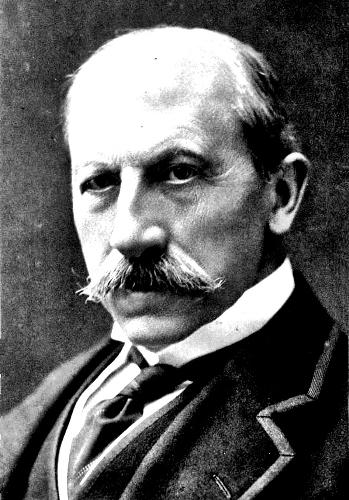
Subran referenced historian Gertrude Carmichael as his source for indicting Daaga with human trafficking. Writing in the Indian Caribbean Diaspora Newsletter of 22 December, 2017, Kamal Persad also referenced Carmichael along with Monica Schuler.
Carmichael, however, does not cite any source in her account of the Daaga mutiny although it is evident that she was faithfully reproducing the account in Edward Joseph’s History of Trinidad (1838), the earliest published history of the island under British rule. Schuler cited her source as Joseph’s History.
Joseph is indeed the seminal source for the claim that Daaga was a slave trader. Interestingly, however, Joseph did not provide any documentary proof for his charge although he claimed to have spoken with some of Daaga’s fellow mutineers. A clinical reading of Joseph’s account reveals that, at best, the evidence is circumstantial; at worse, it is malicious disinformation.
Perhaps Joseph just did not have the time to do the required in-depth research: he was apparently a man hastening ahead of his final destiny: 1838, the year after the revolt, saw the publication of his two major books but it was also the year that he passed away.
After his rescue from a Portuguese slave ship by the British navy, Daaga (renamed Donald Stewart by the British) was forcibly conscripted into the First West India Regiment garrisoned in Trinidad. Britain had established 12 West India regiments between 1795 and 1800 to provide the main infantry forces in her war against France in the Caribbean. After 1807, new recruits were sourced mainly from captured slave ships.
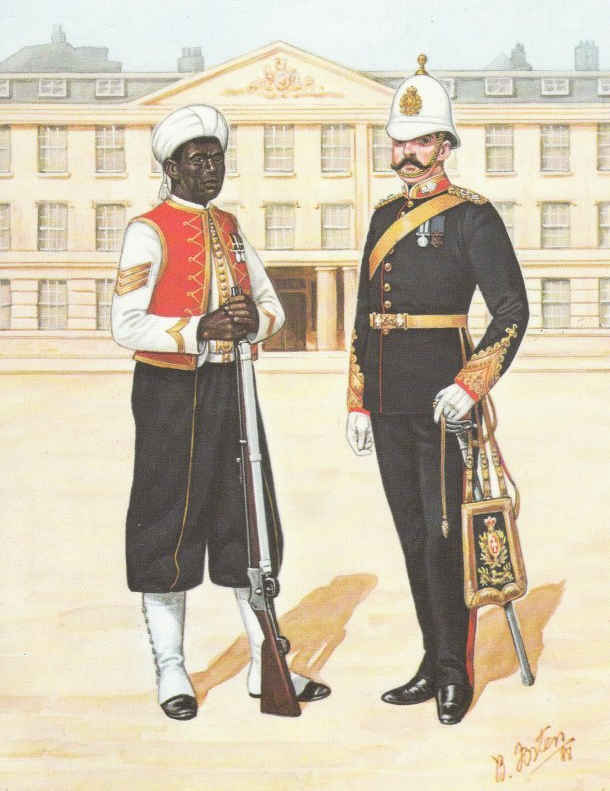
Was Daaga a slave trader and not an innocent victim of the slave trade? Admittedly, that is a valid question in the context of the CRFP’s campaign.
Let us follow Joseph’s account. Joseph deliberately crafted a portrait of Daaga consistent with the stereotypes of African inferiority validated by racist pseudo-biologists of his time. According to Joseph, Daaga stood 6’6’ tall, a rather unusual height for any human of his day. Daaga’s ethnic group, the Ewe-Fon, is famous for their female warriors but not known for giant height. For comparison, as late as 1870, the average height of European males was only 5’ 5” (from a study published in the journal, Oxford Economic Papers).
Joseph also emphasised Daaga’s flat nose and “disproportionate” head, as if the mere combination of those characteristics should remove any doubt from the reader that Daaga must indeed be a slave trader. Joseph tells his readers that Daaga had taken Yoruba prisoners during a military attack that he led, that he sold some of those prisoners to a Portuguese slave ship and that, while on board, he was overpowered and bound with the rest of the captives.
Whose account is this? Is it the Portuguese, the British or Daaga’s? Joseph does not say. Was Joseph, a journalist and novelist by profession, merely applying fillers in a historical void, a practice not uncommon to those professions?
I am mindful of the Igbo proverb, “Until the lion tells his own story, the hunter will always be the hero.”
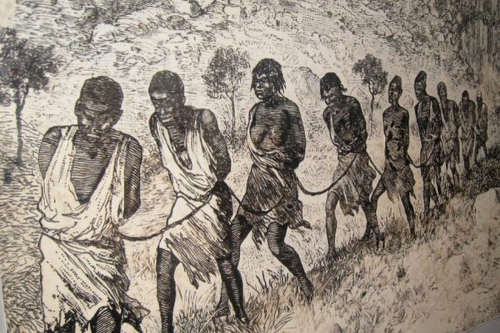
The European transatlantic slave trade was always more than human trafficking. Human trafficking was one disruptive component in a complex of economic relations between Africans and Europeans, which seldom directly involved the selling or buying of captives.
Indeed, most African entrepreneurs did not traffic in human bodies and not every African on board a slave ship was a victim of human trafficking or a slave trader. Some were pawns (collateral) of merchants and others were traders in gold and other traditional commodities, including foodstuff, water and firewood.
A slave ship invariably carried more traded commodities than human captives. A case in point is one slave ship in 1791 that took on board 20,406 yams, 3,400 plantains, 79 bundles of smoked fish, 400 heads of corn, 5,940 mats, two puncheons of palm oil in addition to peppers, shrimps and other items.
Even though it could be argued that these items were adjuncts of European slave trading, the fact is that the producers of—and traders in—these items invariably had no direct interest in slave trading.
An excellent book on the subject, with a focus on the Gold Coast (now southern Ghana), is Simon Newman’s A New Kind of Labour (2013). Newman confirms that many African traders negotiated in European castles as well as aboard slave ships.
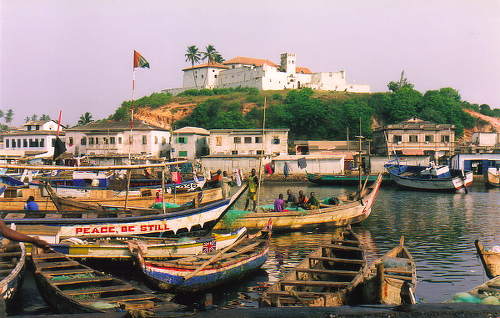
(Copyright Moxon.net)
According to Newman, African “canoemen” operated postal services, transporting letters between European forts, factories and castles; they supplied them with fish and other foodstuffs and transferred European goods from ship to shore.
Interestingly, the Portuguese had a set of regulations called manuelinas to punish canoemen whom they accused of unfair practices. Among the punishments was transportation and sale in American slave colonies.
Furthermore, for free Africans, slave ships were the only means of transport out of Atlantic Africa. This was risky business but, from the very earliest days of Portuguese trading, elite Africans took their chances and sent relatives to European schools or simply to master a European language.
Upon returning to Africa such Africans played key roles in African-European trade and diplomacy. King Afonso l of the Kingdom of Kongo sent his son, Henrique, to Portugal to study theology. He returned as the kingdom’s first Roman Catholic bishop. Another Kongolese named Afonso remained in Lisbon to lecture as a professor in a public school.
European transatlantic trafficking abounds with cases of Africans tricked or deceived by slavers’ captains and sold into slavery. For example, in the mid-18th century, William Ansah Sessarakoo, the 10-year-old son of a prominent Fante caboceer, was entrusted to a captain of a slave ship who was supposed to take him to England for education. Ansah was sold to a planter in Barbados.
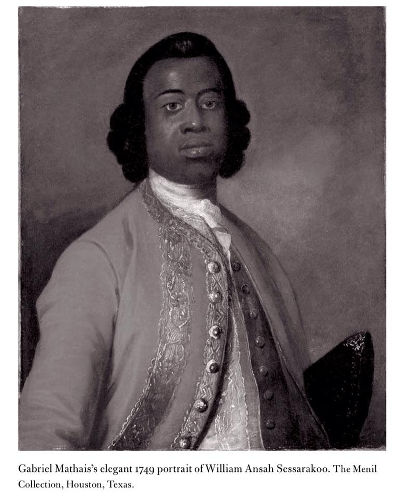
Caboceers were non-traditional rulers who became wealthy middle-men from warehousing British exports to Africa. Sometimes, African traders and caboceer agents journeyed on board slave ships and remained in European colonies as factors to oversee their own commodity transactions.
Fortunately for Ansah, in Barbados, he was spotted by one of these trader-agents, who facilitated his emancipation. After spending some time in England, Ansah returned to Fanteland (southern Ghana) and worked for a while as a resident writer in Cape Coast Castle.
Under the Anglo-Portuguese slave-trade abolition treaty of 1815, Portuguese trafficking was restricted to south of the Equator. The collapse of the Oyo-Yoruba Empire in the 1820s drew many Portuguese traffickers north of the line at a time when the British navy had stepped up patrols.
At any time, a slaving captain, perceiving danger in an approaching British warship, would weigh anchor and make maximum wind for a desperate escape. I have read many original documents on this cat-and-mouse game between British naval captains and slave traders visiting the ports of Accra, Anomabu, Cape Coast and Elmina.
If Daaga was a commodity trader, he could have been trapped in such a getaway attempt. I refuse to speculate without hard evidence. I only offer other historical possibilities.
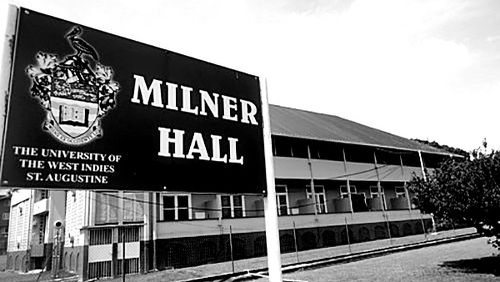
Pitting Daaga against Milner, Columbus and other confirmed imperialist practitioners of native genocide is a game of distraction mastered by apologists for colonialism.
To conclude, the evidence of historians to date fails to establish what Daaga was doing on board the Portuguese ship. Until valid historical evidence proves otherwise, I shall continue to recognise him as a hero of resistance to colonial oppression.
I should also like to appeal to The UWI’s administration not to take precipitate action on Daaga Hall based on claims not founded on solid historical evidence.
 Wired868 Wired868 for smart sport news and opinion
Wired868 Wired868 for smart sport news and opinion

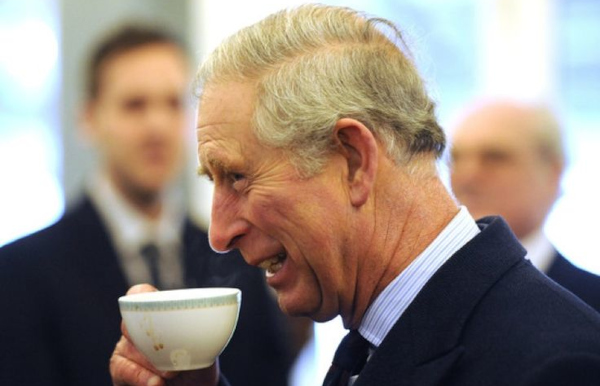
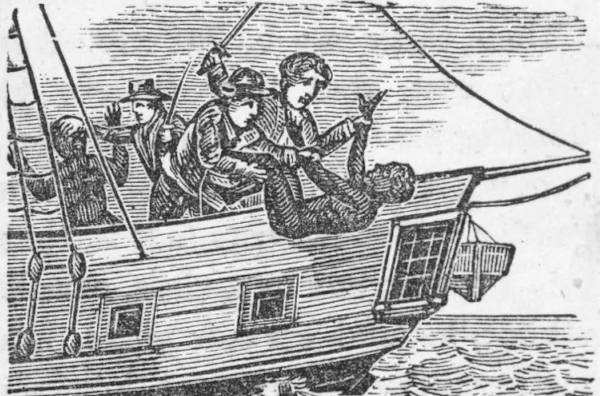
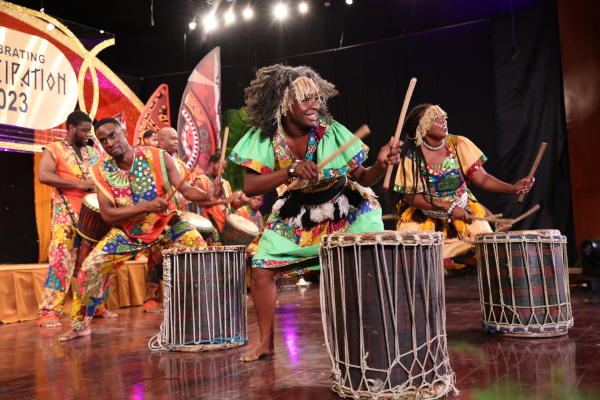
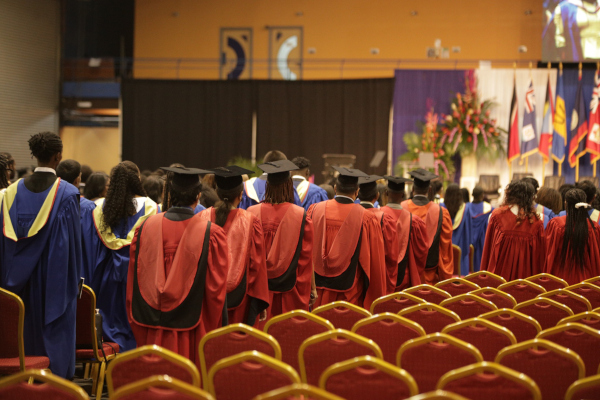


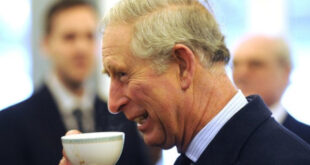
Can we rename the Macoya stadium while we’re at it? 🙂
You mean the Joao Havelange Centre of Excellence?
Lasana yes, was trying to not use the name 😀
Lol. Well the Macoya stadium is actually the Marvin Lee Stadium but I figured you didn’t mean that.
As for the CoE… Maybe if Jack is extradited…
Lasana there’s a stadium in Macoya? I am so out of it 😀
Antoinette, the football stadium. Lol
My issue with the original Daaga is that he was so stupid he thought he and his mutineers could march back to Guinea after their revolt in Trinidad!
How dumb can one man get? He had travelled a great distance by ship from Africa before being rescued by a British ship, was taken back to Africa and then ended up in Trinidad a great distance away. Yet he still thought he and his boys could march back to Guinea overland!
And yes, in spite of being trained soldiers Daaga and his boys were so incompetent at handling their firearms that they were easily beaten in the field, and Daaga himself was hanged.
I would say the modern Daaga was not much smarter than the old one. In 1970 the Black Power marchers had the Eric Williams government tottering and ready to fall. Williams had a plane warming up at Piarco ready to take him into exile as Daaga and his gang organized the Port of Spain to Caroni march. They headed off from Laventille with 10,000 marchers shouting Power! heading to Caroni where they hoped to pick up some Indians to go back to Port of Spain. If that happened the Williams government would surely fall.
What went wrong? Why didn’t any Indians join the march? Dummy Daaga went wrong! The fool did not approach Bhadase Maraj the union leader of the Caroni sugar workers in advance to make sure Indians would join the march. At the time Bhadase was in the political wilderness, having been thrown out of the DLP he had created and didn’t have a handkerchief to cover his political behind. He was dying for a chance to get back in the political game and had nothing to lose by cooperating with Daaga and the Black Power marchers. If Daaga had approached Bhadase in advance of the march and promised him a place in the new government when Eric Williams fell in exchange for Bhadase encouraging Indian sugar workers to join the march, Bhadase would have jumped at the opportunity.
Instead Daaga did nothing of the sort. Bhadase told the Caroni Indians to welcome the Black Power march but not to join it. The marchers returned to Port of Spain without the expected thousands of Indians to fill out their banner Africans and Indians Unite and the rest is history.
Those are checked facts Shabaka. How do mine differ from yours?
Danny please check your facts on Toussaint L’Ouvature.
I know also that Toussaint L’ouverture was a slave owner in Haiti before he joined the revolution. He also, for a time, joined the supreme command of French forces in Haiti and strategically became the governor-general from the French army. But his legacy is a summary of all that and yields to the general good that we have definitely benefited from.
Jesús Christ. .Toussaint a slave owner? In which universe?
I didn’t make the statement to denigrate Toussaint in any way. Rather I presented it as a fact to be put in the same context as the pro Daaga and anti Milner argument.
Toussaint was an ex slave and then free Black who himself managed to purchase his own plantation for which he owned slaves. He abandoned his plantation one month after the initial uprising and joined the revolution.
I have read that account from too many sources for it not to be true.
Some body said OWNER. ..
Go read Black Jacobins. .clr james…Owner?
Rae Samuel, if nothing else, I am a student of CLR James Black Jacobins. The details of Toussaint’s pre revolutionary life were not released for scrutiny until 1970, thirty years after the book was written and ten years after the revised version. But still, I can’t see the difference between “owner” and anything I have said.
Furthermore, I own many books that cover the Haitian revolution, and I don’t remember ever reading how Toussaint acquired his slaves. Whether he purchased them individually from other plantations; from agents on slaveships; inherited them from the previous owner of the plantation; or whether, even that they were members of his own family registered as slaves for legal, administrative, or taxation purposes.
Owner means he owned slaves. Did he?
Yes.
He should do some citation for that Daaga link. My Jamaican friends tell me that some Maroons there were also used by the British to put down slave rebellions there.. I have no citations, bt should go back to read a bit of that history again.
Well..this is a discovery..Why would a slave owner rebel against slavery?
Don’t get caught. .Slavery in Africa was NOT chattel slavery nor was it the DOMINANT mode of production. .A slave there was a debtor or capture of war who was apprenticed to a family.
Ah, the slope that is slippery.
All these years I thought it was named after Makandaal Daaga (NJAC)!!! My life has been a lie!!!!
You are not alone, Nishal. Actually, I was surprised that many in UWI’s administration thought as you did, despite the big signboard in front of the building explaining the name. Nevertheless, there is a connection: MD was the one who changed the name from Guild Hall to Daaga Hall, while adopting the name Daaga as his new surname. The university did not officially recognise the name-change until several years later. MD also changed the name of Woodford Square to “The People’s Parliament”, but that did not get official endorsement from the City Corporation.
Interesting….